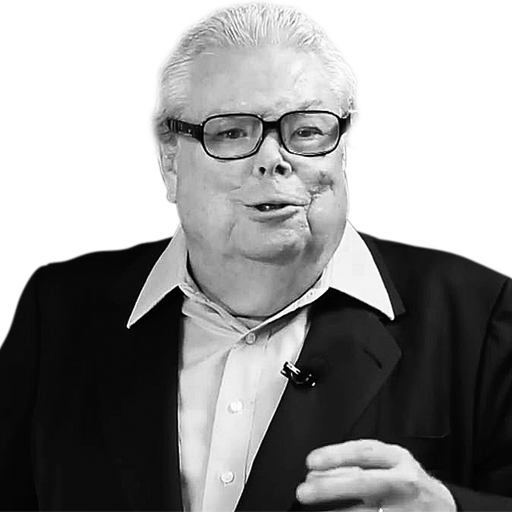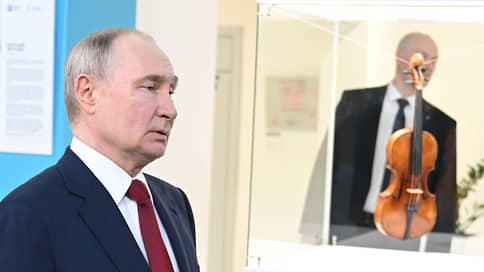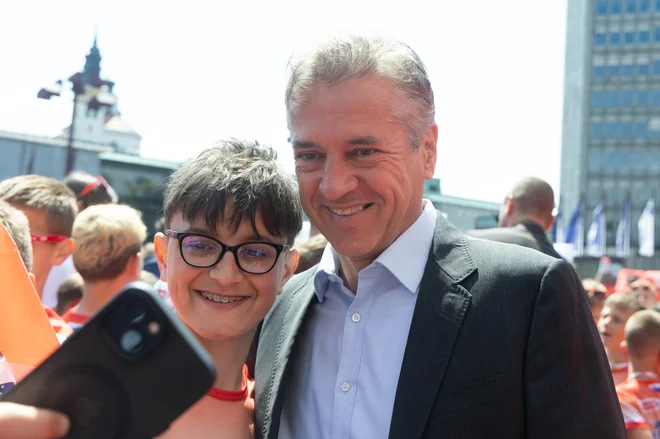In the petrified Rotterdam it is now the turn of Hofplein to make it greener. ‘Because nobody says: do me everywhere asphalt, sidewalk tiles and concrete’
/s3/static.nrc.nl/images/gn4/stripped/data132222651-5f11b8.jpg|https://images.nrc.nl/Xj-SbR-ukgX2uYePOifJZyUJX1A=/1920x/filters:no_upscale()/s3/static.nrc.nl/images/gn4/stripped/data132222651-5f11b8.jpg|https://images.nrc.nl/DQQN0zs4TSUGmCFrsf_mhKR3-ZQ=/5760x/filters:no_upscale()/s3/static.nrc.nl/images/gn4/stripped/data132222651-5f11b8.jpg)
In addition to the terrace of Cece Bar Urbana on Hofplein in Rotterdam, excavators are working. Yet your owner Mariël van Tongerlo does not hear: in two years her guests will look out over a new city square, with trees and fountain. Until then they make the best of it. « If necessary, we put some beach chairs in the sand, » she says. « For the holiday feeling. »
She started the cafe a year ago with her partner, with a view to the transformation of the square. At the moment the case is still a bit tucked away. We are hidden, says hairdresser Maud van der Wal from Salon Maud, next to the cafe. She expects more run -up when the square is ready. « It will soon be a hotspot. »
Until recently, it was a busy traffic junction in the city of Iconic Hofplein. The roundabout, with a three-way road, was on a through route for car traffic between the north and south bank of the Nieuwe Maas. Traffic between East and West was also led through traffic navigation via Hofplein. For example, there were long traffic jams in the center of the city every day during peak hours.
It was not a square that invited. More a place that you wanted to leave as soon as possible
It was not a square that invited. More a place that you wanted to leave as soon as possible. That was no longer possible, Rotterdam thought. The city center has become considerably busier in recent years. By building considerably – especially for the middle and higher segment – the number of inner city residents from 12,000 at the beginning of this century grew four times as much. That number will only increase in the coming years.
All those new and existing residents walk, cycle, do groceries, need greenery. In short, the outdoor space also had to be adjusted. The ‘residence quality’ of the city center had to go up, says project manager Hofplein, Iris van der Lee. Towards the end of 2027, the former Gray Traffic Square was transformed into a green urban square, with considerably more space for pedestrians and cyclists.
Van der Lee holds the office on Hofplein, next to the Hilton Hotel, and shows large wall plates with the successive steps of the project. The square would not close in one go, it was decided. There was still a possibility for cars to pass, as well as for the tram. The square has been overhauled in the pie -point -wise since last month. In the meantime, all traffic lights are out and cyclists and pedestrians have priority.
Photo Walter Autumn
Plain job
The Oude Hofplein can safely be seen as a symbol of post -war Rotterdam. After the bombing of 14 May 1940 largely put the city center in ruins, the city was rebuilt to the American model: wide boulevards, a shopping center in the heart of the city and especially: ample job for the car.
Rotterdam wants to shake off the little sparkling image of a gray car city. « The city is petrified, » says alderman Pascal Lansink-Bastemeijer (outdoor space, VVD) on the phone. He calls the Oude Hofplein an « asphalt pimp ». « That required an intervention. We have a lot of households without a garden. They are also looking for a cooling in the summer. »
The car is given considerably less space. « There are too many people who drive through our city without a destination, » said Lansink. Almost a quarter of car traffic around Hofplein actually has nothing to look for there. « There are literally people who drive to Ridderkerk via the center of Delft. » Rotterdam wants to discourage motorists to use the center as a ‘ring road’.
Hofpleinfontein
Come, let’s walk around, says Van der Lee. She points out how wide sidewalks come along the edge of the square, then cycle paths and then two lanes for cars that are allowed to drive a maximum of thirty kilometers per hour. There are 150 new trees on the square. Unfortunately, those old plane trees have to give way, she points out. « One is exactly on the future cycle path. It is dug out and moved to another corner. »
Unfortunately, two young plane trees on top of the district heating are in the corner of the former Shell building. The five plane trees for the Hilton are retained.
On and around the renewed square it will be seven degrees cooler than on the old one, the municipality has calculated. This is due to the trees, the grass, the planting, the yellow gravel paths. « It surprised us too, » says Van der Lee, « but the green has a great effect on the temperature. » No superfluous luxury, in the city where heat stress with the ever -warmer summers is a growing problem.
The fountain remains the center-also known to non-Rotterdammers because of the traditional dive of Feyenoordsupporters after a victory. Until now, the fountain itself was hardly visible behind all passing cars. It will soon be dug out. As a result, the animal heads carved by artist Cor van Kralingen are more visible.
Invisible to the eye, underground, a lot also happens. For example, the collective sewer, on which sewers come from various neighborhoods, will be renewed. And thirty meters below ground, rainwater is collected in a sand layer where a million liters can be stored. In the summer the trees on the square are watered.
/s3/static.nrc.nl/images/gn4/stripped/data132122791-670da6.jpg|https://images.nrc.nl/U8brxfr1xYC6l-tQsBek64Ri3vE=/1920x/filters:no_upscale()/s3/static.nrc.nl/images/gn4/stripped/data132122791-670da6.jpg|https://images.nrc.nl/uDZ-X_bKRw8uGZvziUS8fFfFvqo=/5760x/filters:no_upscale()/s3/static.nrc.nl/images/gn4/stripped/data132122791-670da6.jpg)
Illustration Juurlink+Happiness
Green hipster zone
Derk Loorbach, professor of socio-economic transitions at Erasmus University, calls the makeover of Hofplein a « important step forward ». He sees that Rotterdam steps into an international trend of cities that change their public space in favor of pedestrians and cyclists. According to him, the ‘autodominance’ is – albeit carefully – tilting.
Several large projects stand out next to Hofplein. For example, a tidal park is being constructed on the south bank of the Nieuwe Maas, next to the Van Brienenoordburg, through which in a few years of Rotterdammers can walk over Lange Volkonders. In addition, the former Railway Viaduct De Hofbogen will be turned into a long green city park, reminiscent of the High Line in New York.
On and around the renewed square it will be seven degrees cooler than on the old
Alderman Lansink has big dreams. « I think green can become one of our new identities. In addition to the port, our architecture, this can be a new calling card for our city. » According to him, that story can count on a lot of consent. « Whether you are left or right, there is no one who says: do me asphalt, sidewalk tiles and concrete everywhere. »
Loorbach sees a risk: that only a select group of residents benefit from the green metamorphosis. « In this way you limit access to the center for people who are auto-dependent, have no money for public transport or not being able to cycle. It should not become a tangent, green hipster zone. »
It makes sense that Rotterdam in the center, in the busiest place, starts with greening, he says. But attention is not only allowed to go to prestige projects such as the renewal of Hofplein, he says. « Rotterdam is a city of large projects. But the smaller interventions in neighborhoods, a kind of urban acupuncture, are perhaps less sexy, but at least as important. »
Read also
The City of the Future is cultural super -diverse
Picnicking
Loorbach listens to the words of Lansink with some skepticism. He speaks of « half -hearted policy. » « Rotterdam does good things, but if you look at the task, the question is whether it is enough. It is good that the car will get competition, but you actually want it to turn around: that there is a radical choice for cyclists and pedestrians. But we are politically not yet. »
Rotterdam does not want to take that road, says the alderman. « We are not going to completely lock the city for the car. If you want to get by car, you are still welcome. It is just no longer for through traffic. » According to him, the support is still ‘too limited’ for a car -free city center. Local residents and entrepreneurs are ‘particularly critical’ in projects like this, according to him.
There is a start. If the expectations come true, the number of cars at Hofplein will fall from 44,000 to 18,000 a day. It remains, Van der Lee, a busy place. She laughs when people in their enthusiasm praise the new design as « oasis of peace ». So it will not be a high Veluwe. Those who want to picnic must go to the Kralingse Bos.
/s3/static.nrc.nl/images/gn4/stripped/data132222672-518314.jpg|https://images.nrc.nl/O4pk-15V9QcZ4wV5e50V-ISfDvk=/1920x/filters:no_upscale()/s3/static.nrc.nl/images/gn4/stripped/data132222672-518314.jpg|https://images.nrc.nl/2gkLvoKy4M8xrZvMTQUX0CeV_ZU=/5760x/filters:no_upscale()/s3/static.nrc.nl/images/gn4/stripped/data132222672-518314.jpg)

:format(webp)/s3/static.nrc.nl/images/gn4/stripped/data108307181-a2de19.jpg)
/s3/static.nrc.nl/wp-content/uploads/2025/05/19152726/data132331055-6d24ee.jpg)
/s3/static.nrc.nl/images/gn4/data132516607-59aa9c.jpg)
:format(webp)/s3/static.nrc.nl/wp-content/uploads/2025/05/18043544/SWITZERLAND-MUSIC-TELEVISION-AWARD-EUROVISION_67935324.jpg)




